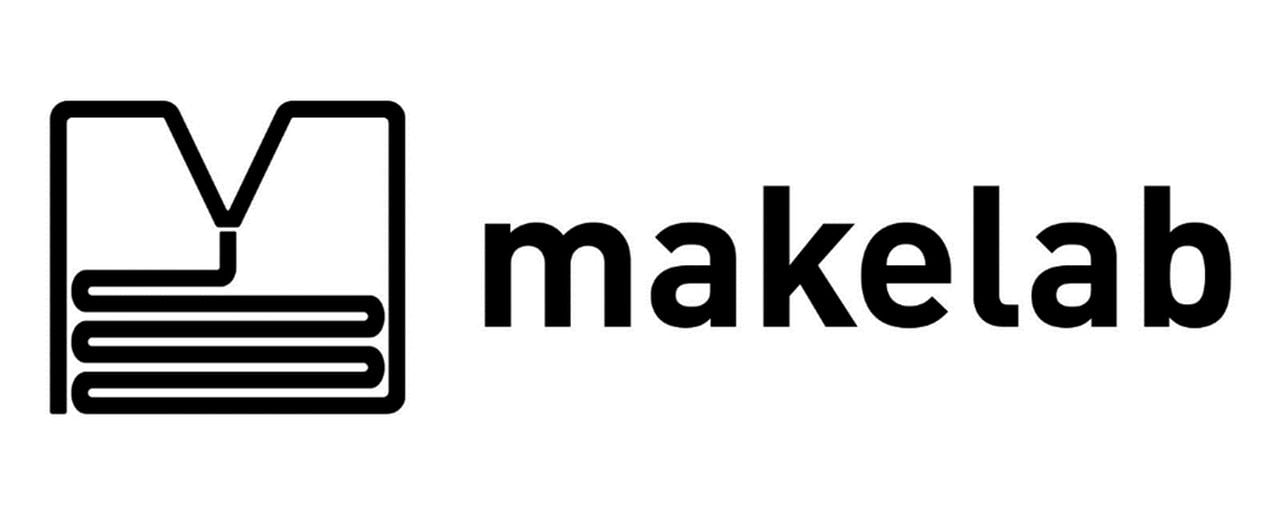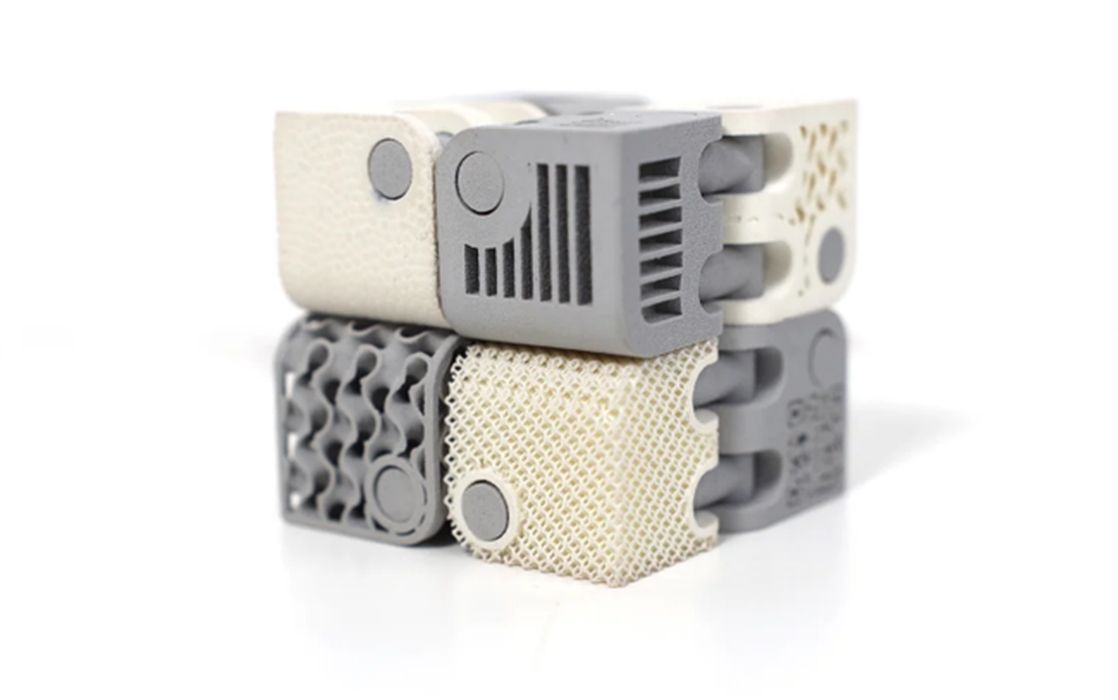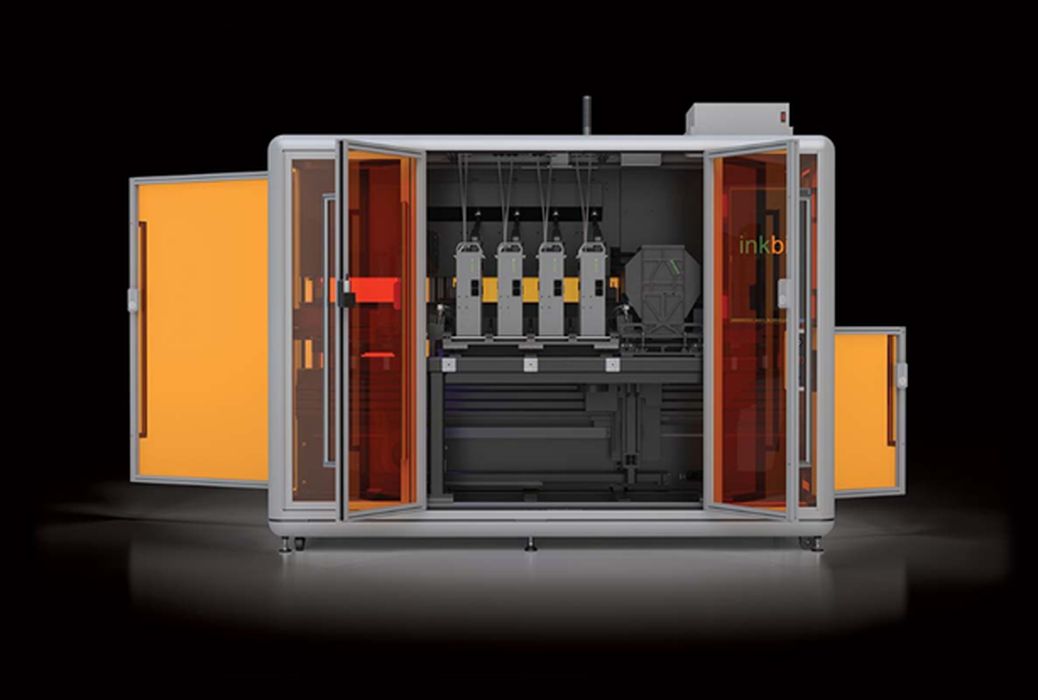
Christopher Lee and Charles R. Goulding sit down for an interview with MAKELAB Co-founder and CEO, Christina Perla.
3D Printing in Brooklyn
We recently interviewed Christina Perla from MAKELAB, a prominent 3D printing company in Brooklyn. Located in a rapidly growing borough, MAKELAB stands at the cutting edge of additive manufacturing, seamlessly blending technology and innovation. Christina, with her background in industrial design, is spearheading the company’s new partnership with INKBIT. This collaboration grants MAKELAB access to advanced technologies like VCJ, opening up new possibilities in the 3D printing arena. Her expertise sheds light on the future of the 3D printing industry, emphasizing the significance of their recent collaboration with INKBIT.
Christina Perla
Christina Perla is the Co-Founder and CEO of MAKELAB, a Brooklyn-based 3D printing service that caters to a broad range of industries including design, engineering, and consumer goods. Under Christina’s innovative leadership, MAKELAB has grown significantly, establishing itself as a reputable source for high-quality, custom 3D printed models. Her vision has always been to bridge the gap between creativity and technology, and through MAKELAB, she has been able to materialize this vision by providing accessible 3D printing solutions to both individuals and businesses.

Having graduated with a degree in Industrial Design from Pratt Institute, Christina’s educational background laid a strong foundation for her entrepreneurial journey. Her knowledge and passion for design drive the aesthetic and quality standards at MAKELAB. Moreover, Christina’s belief in the power of collaborative efforts is reflected in the inclusive work culture she fosters within her company. She is a notable advocate for diversity in the tech industry, continuously pushing for greater inclusion and opportunities for underrepresented groups.
Christina Perla’s influence extends beyond her enterprise. She is an active member of the entrepreneurial and design communities, frequently sharing her insights on the evolving landscape of 3D printing and its potential to revolutionize traditional manufacturing processes. Her dedication to promoting 3D printing education, combined with her advocacy for diversity in tech, make her a respected figure in her field. Christina’s ambition and forward-thinking approach not only drive the success of MAKELAB but contribute significantly to the broader 3D printing industry and tech community.
The Birth of MAKELAB

MAKELAB, founded by industrial designers from Pratt, Brooklyn, began its journey in 2016 as a design consulting firm. Christina reminisced, “We initiated with design consulting in 2016, navigating the industrial design process to produce market-ready products.” Their intensive involvement with 3D printing during this period laid the foundation for MAKELAB.
While MAKELAB’s inception involved balancing design consulting and 3D printing, the founders soon shifted their entire focus to MAKELAB, leading to a threefold growth. Their niche: industrial designers in consumer product development. Unlike platforms like 3D Hubs and Xometry, MAKELAB stood out by offering a dependable and local service, addressing a clear market gap identified in 2019
The company’s journey wasn’t always smooth, particularly with challenges posed by the global pandemic. Yet, Christina highlighted the company’s resilience, saying, “Despite COVID, we managed to grow slightly, a fact I’m profoundly grateful for.” MAKELAB’s story is one of spotting opportunities within challenges. With their resilience and deep understanding of their market, the company remains on an upward trajectory, dedicated to serving industrial designers who prioritize dependable, localized service.”
VCJ Printing
During our conversation, Christina provided valuable insights into the VCJ 3D printing technology developed by inkbit. She explained that VCJ utilizes a print head similar to PolyJet, which is able to deposit multiple materials onto the build plate in a single layer. The print head moves back and forth, laying down a line of material on each pass. According to Christina, one of those materials is typically wax, which acts as a temporary support substrate during the printing process. Optionally, a second build material can also be deposited for multi-material parts.

As Christina explained, “the build plate moves back and forth, depositing a single line of material on each pass. This consists of wax as the first material, and optionally a second material for multi-material builds.” This wax acts as a temporary support substrate.
Once the print is complete, the entire build forms into a large, consolidated block that Christina referred to as a “cake.” This cake consists of the final parts fully embedded within the wax supports that were printed alongside them. A key step involves submerging the entire “cake” in a bath, where “the wax and parts are dissolved, followed by additional processing to remove the wax.”
This results in parts without any visible support marks or defects. As Christina noted, “the viscosity of the wax allows for filling very small channels, which are then melted out. The results are incredible.” The advantages of VCJ over traditional printing methods are significant. VCJ’s use of wax supports allows it to produce fully supported, intricate designs without compromising quality or surface finish. VCJ achieves an exceptionally high level of precision and surface quality down to 40 microns, according to Christina, making it suitable for applications requiring tight tolerances like robotics and seals. While cost remains a factor, the undeniable value for brands shines through.
VCJ Benefits Include:
• Precision: Utilizes machine vision to scan every layer during the print process, enabling real-time feedback and adjustments to align each print layer accurately with the original CAD design, ensuring high geometric fidelity and precision.
• Multi-Material Capability: Natively a multi-material machine, allowing for the creation of parts with varying material properties within a single print job, which could be beneficial in producing complex multi-material parts or assemblies.
• Embedding Non-Printed Components: The machine vision makes it possible to incorporate non-3D printed parts into an otherwise printed object, with the system recognizing the foreign object and adjusting properly.
• Enhanced Material Properties: Ability to print with high-performance polymers and engineering-grade resins like epoxies, which can lead to parts with greater durability and chemical resistance compared to those produced with other 3D printing technologies.
• Sustainability: Uses recyclable wax as a support material, which can be removed and reused, promoting eco-friendliness.
The New Inkbit Partnership
Christina had been impressed by the capabilities of Inkbit’s VCJ 3D printing technology to produce complex designs with unprecedented precision and quality without any support marks or defects. As the co-founder of MAKELAB, she recognized the potential value this process could provide for their customers developing applications requiring tight tolerances. Seeking to leverage VCJ’s advantages, MAKELAB initiated discussions with Inkbit about a potential partnership. This would allow MAKELAB to expand their offerings and provide access to VCJ’s capabilities, further supporting the innovative work of their client base.

Rather than purchasing an expensive VCJ printer outright, MAKELAB approached Inkbit about a partnership where they could offer the VCJ materials and process to their customer base. As Christina stated, “We asked for some sort of partnership where we could offer their materials to our customer base. Best case scenario would be that we have a machine here.”
Both companies understood the risks and limitations as startups, leading them to engage in a production partnership. MAKELAB works closely with Inkbit’s teams, using their own quality standards for parts printed by Inkbit. Christina noted quality is a top concern, saying “We want this to grow into something bigger, and we want the customer acquisition of these materials and technology to grow.”
The initial partnership has Inkbit printing parts for MAKELAB with a seven day lead time. But both parties aim to ramp up capabilities together as the partnership expands VCJ 3D printing access for MAKELAB customers. According to Christina, the collaboration reflects both companies’ dedication to delivering the highest quality results.
The Research & Development Tax Credit
The now permanent Research and Development (R&D) Tax Credit is available for companies and startups developing new or improved products, processes and/or software.
3D printing can help boost a company’s R&D Tax Credits. Wages for technical employees creating, testing and revising 3D printed prototypes can be included as a percentage of eligible time spent for the R&D Tax Credit. Similarly, when used as a method of improving a process, time spent integrating 3D printing hardware and software counts as an eligible activity. Lastly, when used for modeling and preproduction, the costs of filaments consumed during the development process may also be recovered.
Whether it is used for creating and testing prototypes or for final production, 3D printing is a great indicator that R&D Credit eligible activities are taking place. Companies implementing this technology at any point should consider taking advantage of R&D Tax Credits.
The Future
Christina expressed optimism about the future of 3D printing. As she stated, “what excites me about this one is it matches what we promise to our customers, like, if a print fails, it’s on us, you know, we take we take the hit, we take the risk, we take the responsibility, we take the accountability.” Christina has witnessed the industry’s rapid growth firsthand over many years. As an early pioneer, she values partnerships like MAKELAB’s with Inkbit that can “deliver on specifications.” As Christina noted, achieving accuracy down to 40 microns with VCJ demonstrates “this is impressive in itself. And I think that is impressive in itself.” Through her work at MAKELAB, Christina has seen increasing customer demands for capabilities beyond traditional FDM and SLA. She hopes to see additive manufacturing play a greater role in applications requiring tight tolerances like robotics. Christina’s vision is of an industry where, as she said, “promises align with results,” to fully realize 3D printing’s potential through trusted collaborations.
